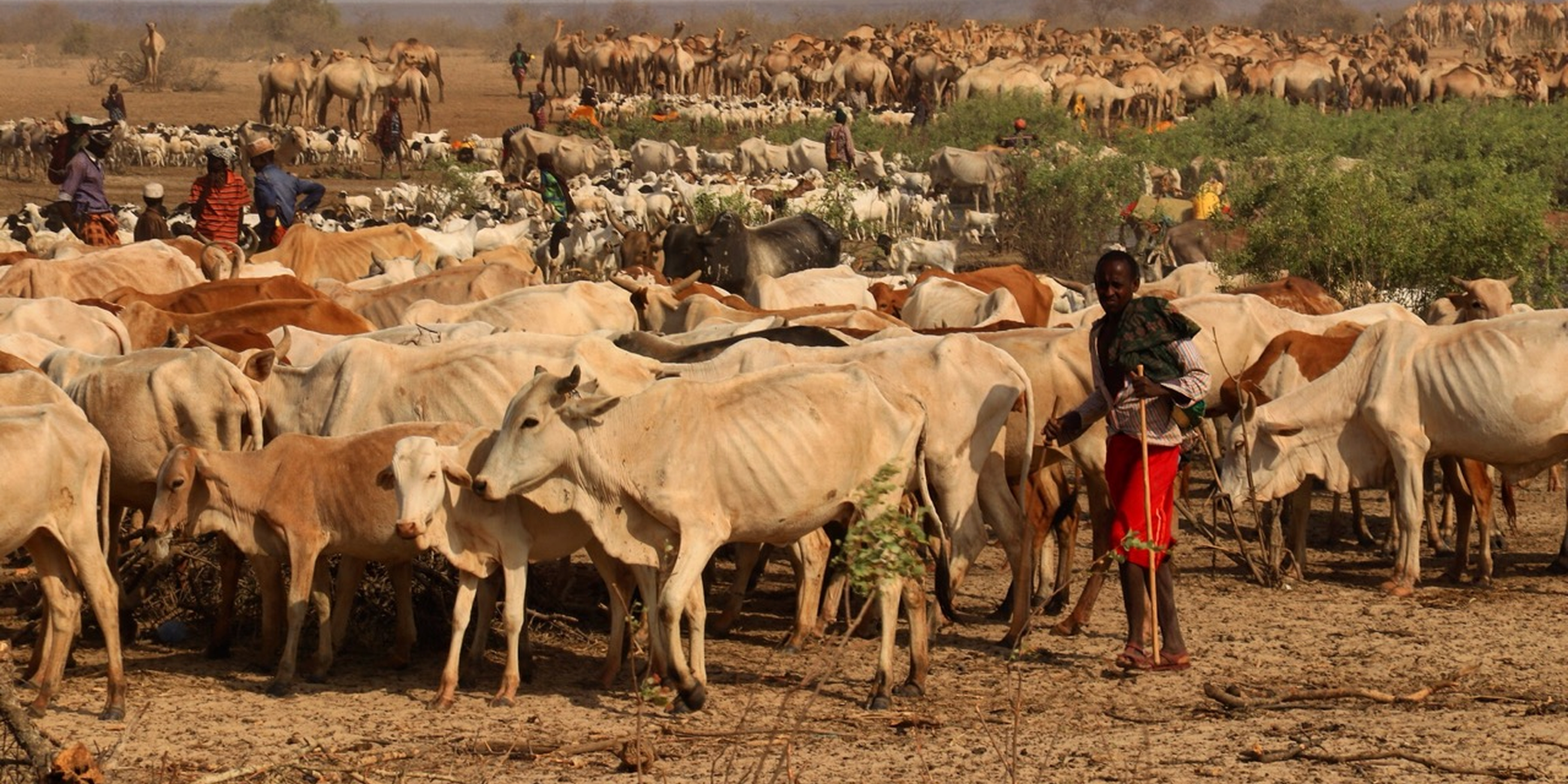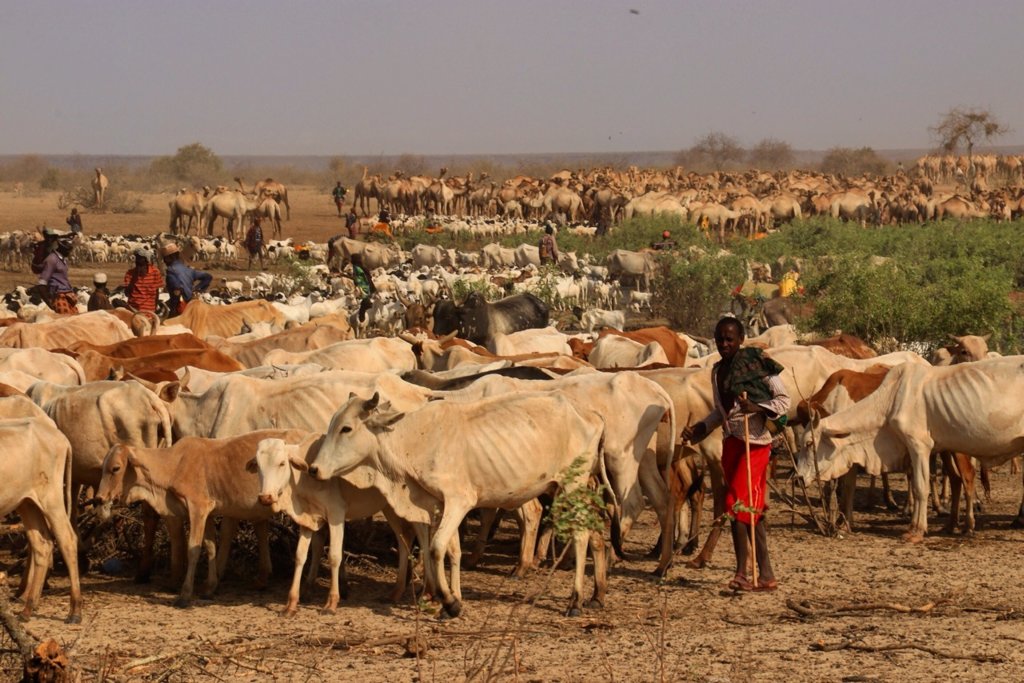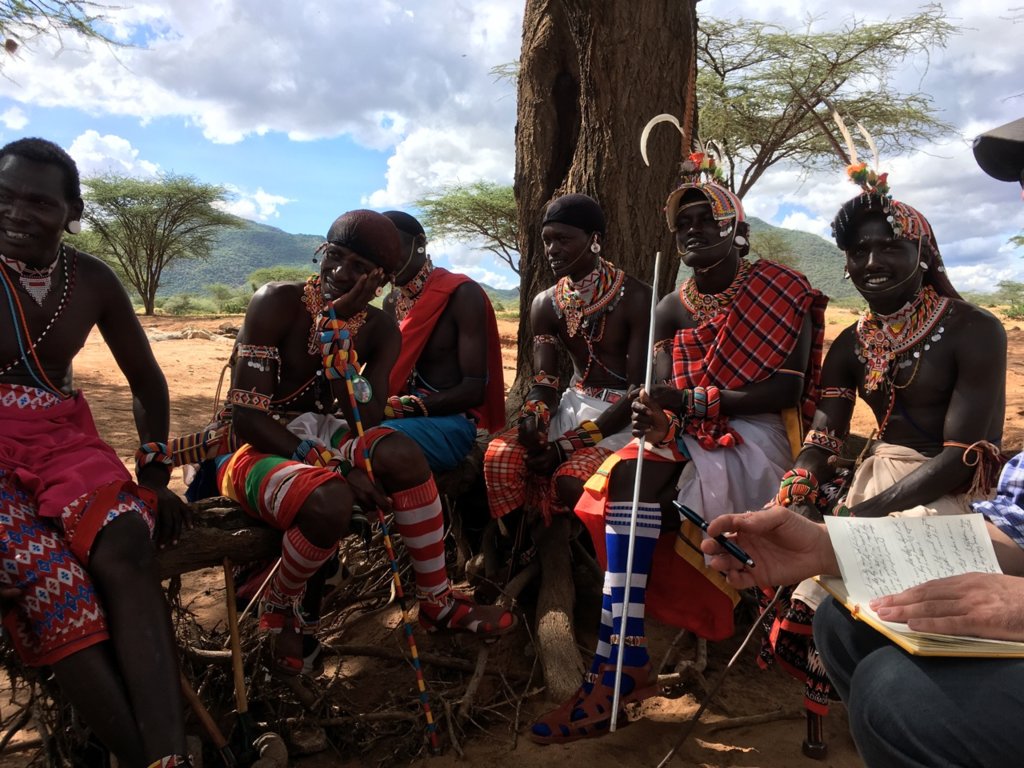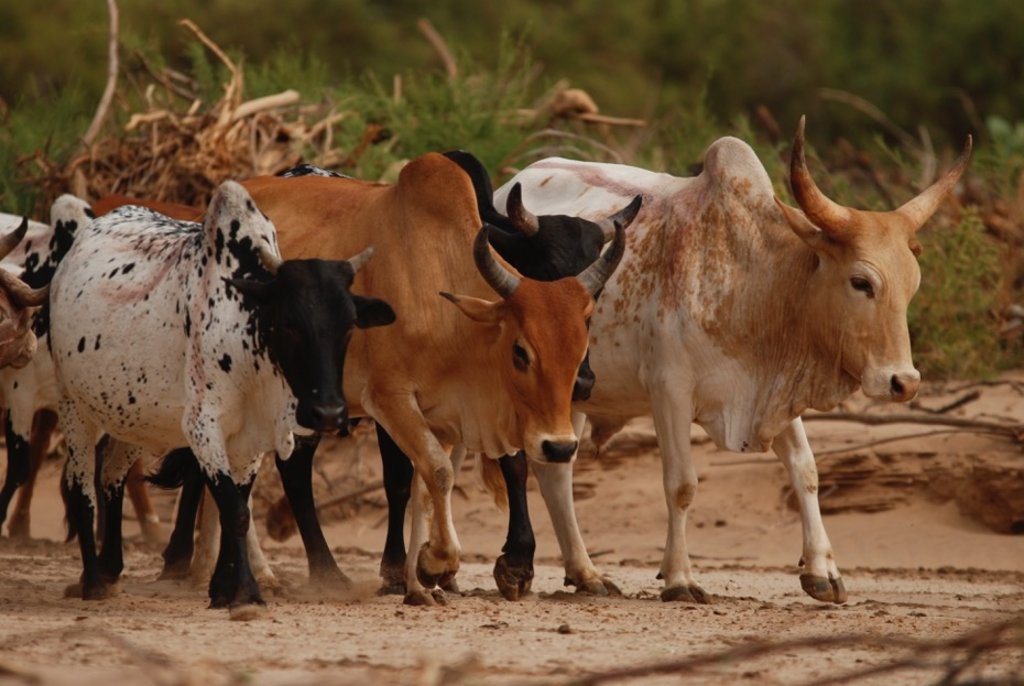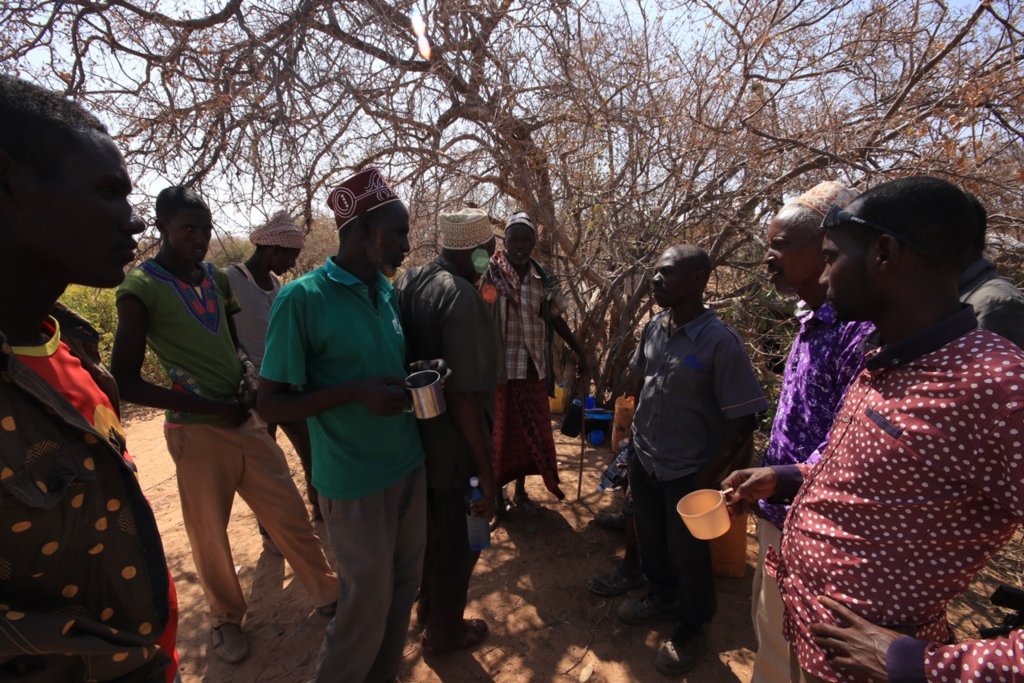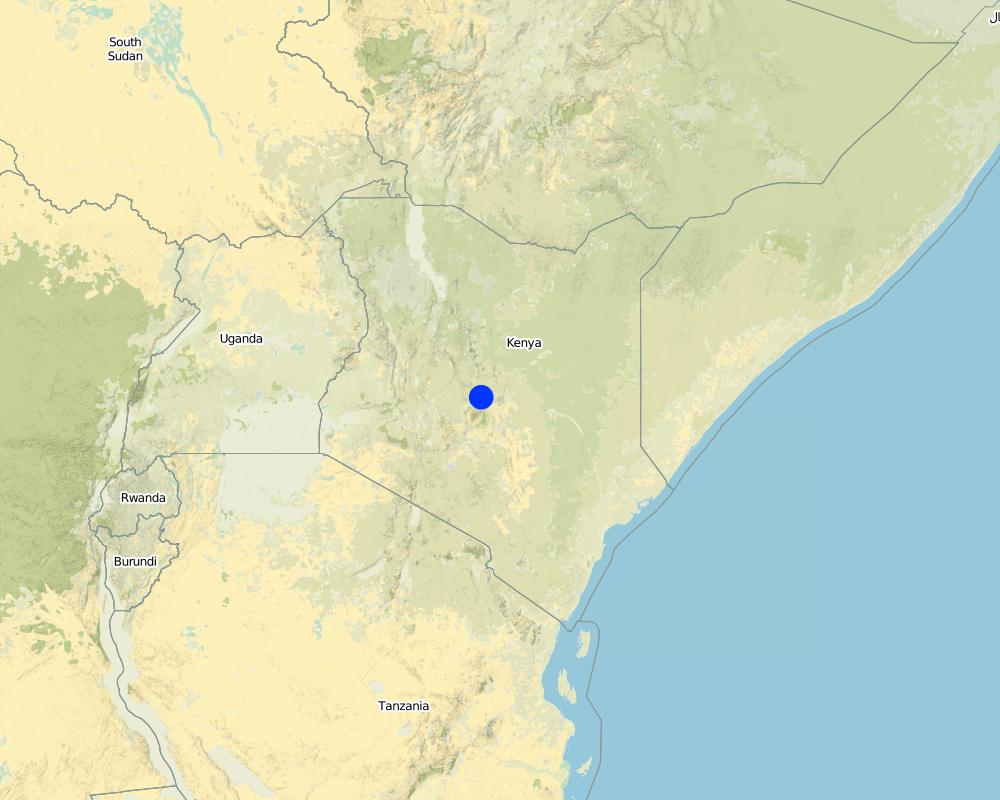Northern Rangelands Trust - Livestock to Markets [肯尼亚]
- 创建:
- 更新:
- 编制者: Peter Tyrrell
- 编辑者: –
- 审查者: Hanspeter Liniger, Rima Mekdaschi Studer, Donia Mühlematter
approaches_3435 - 肯尼亚
- Northern Rangelands Trust - Livestock to Markets: Oct. 10, 2018 (public)
- Northern Rangelands Trust - Livestock to Markets: Sept. 3, 2018 (inactive)
- Northern Rangelands Trust - Livestock to Markets: Oct. 6, 2018 (inactive)
- Northern Rangelands Trust - Livestock to Markets: May 24, 2018 (inactive)
- Northern Rangelands Trust - Livestock to Markets: June 5, 2018 (inactive)
- Northern Rangelands Trust - Livestock to Markets: April 27, 2018 (inactive)
查看章节
全部展开 全部收起1. 一般信息
1.2 参与方法评估和文件编制的资源人员和机构的联系方式
关键资源人员
Patrick Ekodere:
肯尼亚
有助于对方法进行记录/评估的项目名称(如相关)
Book project: Guidelines to Rangeland Management in Sub-Saharan Africa (Rangeland Management)1.3 关于使用通过WOCAT记录的数据的条件
(现场)数据是什么时候汇编的?:
13/03/2018
编制者和关键资源人员接受有关使用通过WOCAT记录数据的条件。:
是
2. SLM方法的描述
2.1 该方法的简要说明
Northern Rangeland Trust works across the rangelands of northern Kenya to improve market access to pastoral communities across 20,000 km2. The program improves local revenue generation, incentives to reduce herd size, and channels funding into improved rangeland management across the conservancies.
2.2 该方法的详细说明
该方法的详细说明:
The Northern Rangelands Trust (NRT) is a non profit organisation established in 2004. It works with communities to develop community conservancies, to transform peoples lives, secure peace and conserves natural resources in northern Kenya. NRT works cross 20,000 km2, with 33 conservancies.
NRT established NRT Trading to identify, incubate, and pilot, and scale sustainable business across the NRT conservancies. The help to incubate and run business that encourages conservation ethics, while improving livelihoods.
The Livestock to Market Program (LTM) was established in 2006 as a partnership between NRT, NRT affiliated conservancies, and two private conservancies - Ol Pejeta and Lewa. The program was funded by Flora and Fauna International and The Nature Conservancy. The program was designed to: to build resilient livelihoods for local pastoralists through providing a local, equitable, reliable, fair market for a large number of cattle; provide incentives to increase production viability of cattle, reduce herd size and avoid losses during droughts; build conservation momentum; directly benefit individual conservancies through sale levies.
The model works to first buy cattle from NRT affiliated conservancies, these cattle are sold on weight and grade, and tries to embrace a more market-driven approach. Once bough cattle is quarantined and vaccinated on Lewa. They are then fattened and sold on to different markets depending on size and age.
The program aims to benefit local people through providing an equitable market with similar or better rates than available and through revenue generation for each conservancy - to provide health and education benefit. A key goal of this benefit system is through channeling conservancy levies and behavioral change into improved rangeland management. Improved management, implemented by conservancies, will lead to improved productivity of the rangelands, increased livestock quality, increased revenue for pastoralists, and ultimately contribute to the goals of NRT - Peace and security; resilient livelihoods; productive rangelands; stable wildlife; and growing enterprise.
NRT has a fully fledged grazing management team working across the conservancies to enhance pasture and land management is upheld by all members, this working by involving alienation of dry season and wet season grazing corridors in order to guarantee animal –wildlife sustainable grazing. Several technologies are implemented under this approach to improve rangeland management. Strategic destocking and cattle bunching in conservancies is one method. Supplementary feed is also provided to increase the weight gain of cattle before sale.
2.3 该方法的照片
2.5 采用该方法的国家/地区/地点
国家:
肯尼亚
区域/州/省:
Baringo, Garissa, Isiolo, Laiikipia, Meru, Samburu, Turkana and Lamu Counties
Map
×2.6 该方法的开始和终止日期
注明开始年份:
2006
注释:
In 2014 NRT spun off its commercial activities into a stand alone social enterprise, Northern Rangelands Trading Ltd (NRT Trading).
2.7 方法的类型
- 基于项目/方案
2.8 该方法的主要目的/目标
Assist pastoralists and families in the NRT Conservancies to build resilient livelihoods by providing a local, equitable, reliable, fair market for large numbers of cattle.
Provide incentives to pastoralists to manage cattle for ready markets and over time reduce herd sizes to avoid loses due to drought among other factors, in an effort to improve rangeland health and productivity.
Gain conservation leverage by linking market access to conservation outcomes.
Directly benefit Conservancies through purchase and sale levies.
Involve a complete value chain model i.e. involving pastoralist producers, disease control actors & quarantine, designated fattening ranches, slaughter, and marketing.
2.9 推动或妨碍实施本办法所适用的技术的条件
社会/文化/宗教规范和价值观
- 阻碍
Pastoral societies do not necessarily have cattle for revenue generation, and they currently do not manage cattle for weight and the beef market.
财务资源和服务的可用性/可得性
- 启动
The spread of Mpesa (Mobile Money) is helping to improve the ability for people to share money across the region.
- 阻碍
Lack of funding to support disease control in the conservancies, especially those which may hinder the movement and sale of livestock. e.g FMD.
机构设置
- 启动
参与者的的协作/协调
- 阻碍
Certain value chain operations are hindered by the lack of cohesion between country and national government. This includes disease control and taxes.
土地治理(决策、实施和执行)
- 阻碍
There are challenges in implementing improved grazing management across many of the conservancies due to a lack of ability to enforce.
了解SLM,获得技术支持
- 阻碍
High costs of technical expertise needed to upscale grazing and land management.
其他
- 阻碍
The region is insecure and hinders the impact and effectiveness of the program.
3. 相关利益相关者的参与和角色
3.1 该方法涉及的利益相关者及其职责
- 当地土地使用者/当地社区
27 community conservancies
Land-owners and managers of cattle. They benefit from the sale of cattle through LTM and implement the grazing management plans.
- SLM专家/农业顾问
NRT - Grazing management team
Provide technical advise to conservancies to improve grazing management.
- NGO
Sidai
Sidai is working with community conservancies by selling drugs. LTM purchases some basic veterinary drugs from Sidai outlets.
- 地方政府
County Government
Extension services for livestock management and disease control. Beneficiaries of county levies.
3.2 当地土地使用者/当地社区参与该方法的不同阶段
| 当地土地使用者/当地社区的参与 | 指定参与人员并描述活动 | |
|---|---|---|
| 启动/动机 | 互动 | NRT conservancy model creates independent units that have strong leadership and governance structures. These conservancy boards and management are involved and are the drivers at each stage. |
| 计划 | 互动 | Conservancies are involved in planning stages. |
| 实施 | 外部支持 | NRT-LTM runs the markets and livestock fattening with support from both local and private conservancies. |
| 监测/评估 | 被动 | Monitoring is done through the NRT monitoring systems. |
3.3 流程图(如可用)
3.4 有关SLM技术选择的决策
具体说明谁有权决定选择要实施的技术:
- 所有相关参与者,作为参与式方法的一部分
解释:
The NRT grazing management teams work with the community conservancies officials and board to establish grazing management plans and implement restoration of degraded rangelands.
明确做出决策的依据:
- 对充分记录的SLM知识进行评估(基于证据的决策)
- 个人经验和意见(无记录)
4. 技术支持、能力建设和知识管理
4.1 能力建设/培训
是否为土地使用者/其他利益相关者提供培训?:
是
明确受训人员:
- 土地使用者
如果相关,请说明性别、年龄、地位、种族等。:
NRT governance department conducts effective leadership and management training to conservancy leadership across the board.
培训形式:
- 公开会议
4.2 咨询服务
土地使用者有权使用咨询服务吗?:
是
指明是否提供了咨询服务:
- 在土地使用者的土地上
说明/注释:
Some support is provided by county government extensions services. NRT also provides support.
4.3 机构强化(组织发展)
是否通过这种方法建立或加强了机构?:
- 是,非常
具体说明机构的强化或建立程度:
- 本地
说明机构、角色和职责、成员等。:
Community conservancies have gained funding to implement projects and strengthened their knowledge on livestock production systems and rangeland management.
具体说明支持类型:
- 财务
- 能力建设/培训
4.4 监测和评估
监测和评估是该方法的一部分吗?:
是
注释:
Monitoring and evaluation are annually conducted through the mandatory annual statutory audit by contracted reputable audit firms.
Internal production monitoring is done through the monthly internal tracking systems.
若是,该文件是否用于监测和评估?:
否
4.5 研究
研究是该方法的一部分吗?
是
明确话题:
- 经济/市场营销
提供进一步的细节,并指出是谁做的研究:
The research formed the basis of choosing to scale up the programme and recommendations to run the programme as a business.
5. 融资和外部物质支持
5.1 该方法中SLM组成部分的年度预算
注释(例如主要的资助来源/主要捐助者):
The program is supported by a loan from The Nature Conservancy, that is repayable in 10 years.
5.2 为土地使用者提供财政/物质支援
土地使用者是否获得实施该技术的财政/物质支持?:
是
如果是,请具体说明支持的类型、条件和提供者:
Financial support comes in the form of improved livestock markets.
5.3 对特定投入的补贴(包括劳动力)
- 无
5.4 信用
是否根据SLM活动的方法给予信用值?:
否
5.5 其它激励或手段
是否有其他激励措施或工具用于促进SLM技术的实施?:
否
6. 影响分析和结论性陈述
6.1 方法的影响
该方法是否有助于当地土地使用者,提高利益相关者的参与度?:
- 否
- 是,很少
- 是,中等
- 是,支持力度很大
Through the strengthening of community conservation.
该方法是否帮助土地使用者实施和维护SLM技术?:
- 否
- 是,很少
- 是,中等
- 是,支持力度很大
Provide financial incentives and technical support from NRT.
该方法是否调动/改善了使用财务资源实施SLM的途径?:
- 否
- 是,很少
- 是,中等
- 是,支持力度很大
Through financing of conservancy operation which supports governance, security and conservation programs ($80,000 over 4 years).
该方法是否提高了土地使用者实施土地管理的知识和能力?:
- 否
- 是,很少
- 是,中等
- 是,支持力度很大
Yes through the outreach from NRT grazing management team.
该方法是否建立/加强了机构、利益相关者之间的合作?:
- 否
- 是,很少
- 是,中等
- 是,支持力度很大
Strengthen ties between community conservancies, NRT and private conservancies.
该方法是否有助于社会和经济弱势群体?:
- 否
- 是,很少
- 是,中等
- 是,支持力度很大
Empower marginalized pastoralists through the provision of $1,982,210 over 4 years in income to 14,864 families.
该方法是否改善了粮食安全/改善了营养?:
- 否
- 是,很少
- 是,中等
- 是,支持力度很大
Through financial provision to pastoral people.
该方法是否改善了市场准入?:
- 否
- 是,很少
- 是,中等
- 是,支持力度很大
This created regional livestock markets with 5630 cattle bought over 4 years.
6.2 土地使用者实施SLM的主要动机
- 增加生产
There is an increasing shift towards a production focused livestock industry in pastoral areas.
- 增加利润(能力),提高成本效益比
This system provides an opportunity for community members to benefit from reliable prices at markets.
- 减少土地退化
This project works with community conservancies to prevent and reduce land degradation, which has become a widespread problem in the north of Kenya. This is done through the implementation of new grazing systems, strengthening resource governance, and restoring degraded areas through reseeding and bush clearing.
6.3 方法活动的可持续性
土地使用者能否维持通过该方法实施的措施(无外部支持的情况下)?:
- 否
若否或不确定,请具体说明并予以注释:
NRT - Trading is a central actor in the LTM system, and controls the purchasing and movement of cattle, and manages the finances of the sales. The landowners do not purchase, fatten or sell livestock, they rely on NRT.
6.4 该方法的长处/优点
| 土地使用者眼中的长处/优势/机会 |
|---|
| Access to a reliable, close, and equitable weight and grade based market for cattle. |
| Opportunities to restore and prevent landscape degradation through funding provided to communities, support from NRT, and through the shift towards higher quality beef, which requires improved rangeland management to meet demands. |
| Funding for community projects through conservancies. |
| 编制者或其他关键资源人员认为的长处/优势/机会 |
|---|
| Strengthening institutions of grazing management, which should improve the ability to implement sustainable rangeland management technologies. |
| Creating a shift to a production based focus on livestock management, which should increase livestock quality, and the underlying rangeland productivity. |
6.5 该方法的弱点/缺点以及克服它们的方法
| 土地使用者认为的弱点/缺点/风险 | 如何克服它们? |
|---|---|
| Unfair or inequitable pricing of livestock. | Clarity on revenue sharing from NRT - Trading. Prices per weight and grade clear and fair. |
| Some pastoralists do not want to sell cattle, and are not motivated by increasing revenue through market-based systems. |
| 编制者或其他关键资源人员认为的弱点/缺点/风险 | 如何克服它们? |
|---|---|
| Lack of ownership and participation in the NRT LTM may isolate community members and create friction over finances and project ownership. | |
| Land and resources on the fattening ranches are limited and land invasions have complicated this. |
7. 参考和链接
7.1 方法/信息来源
- 根据报告和其他现有文档进行编译
Websites, power-point presentations, and conversations with NRT staff.
7.3 链接到网络上可用的相关信息
标题/说明:
NRT - LTM Website
URL:
http://www.nrt-kenya.org/livestock/
链接和模块
全部展开 全部收起链接
无链接
模块
无模块


